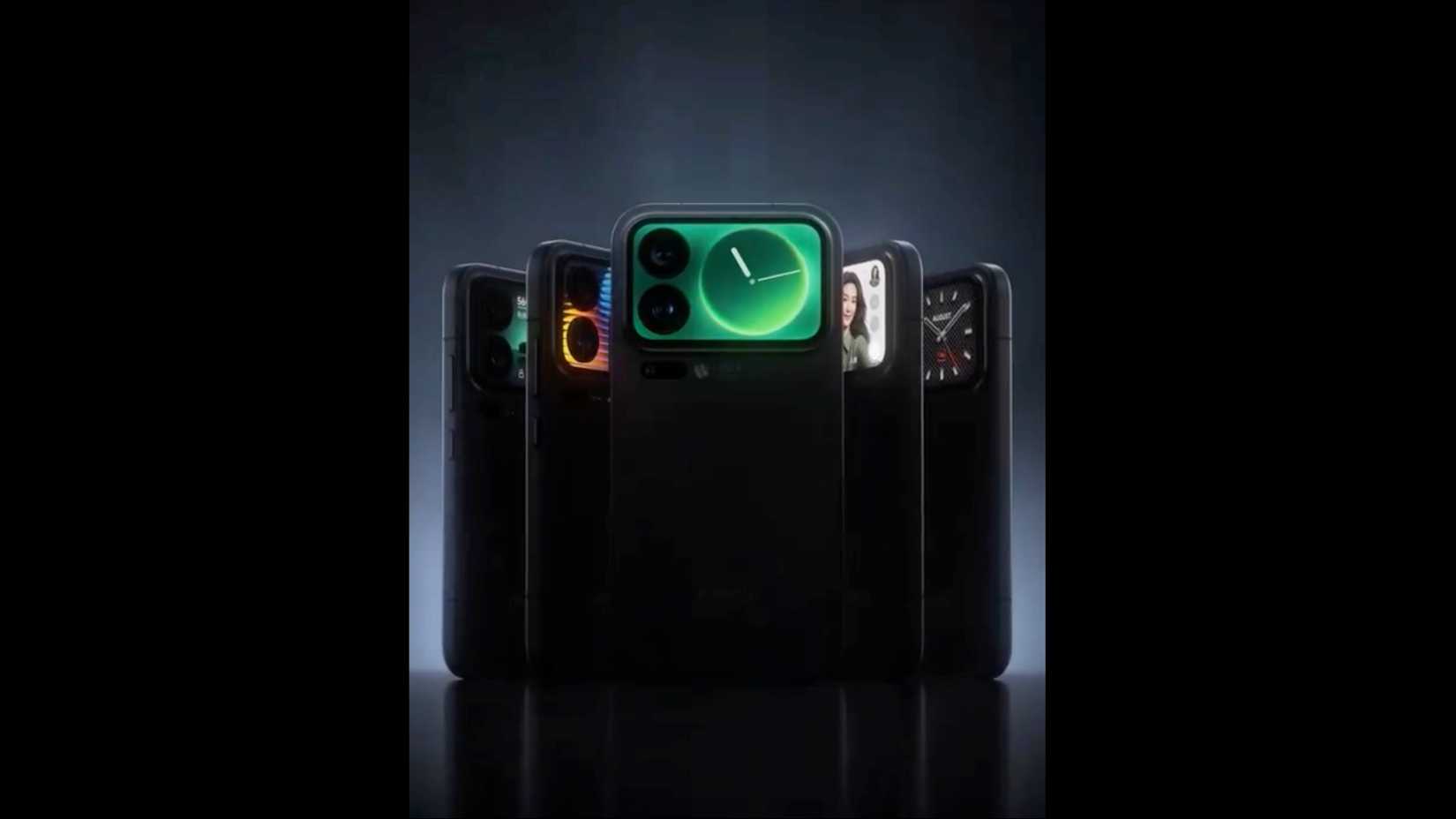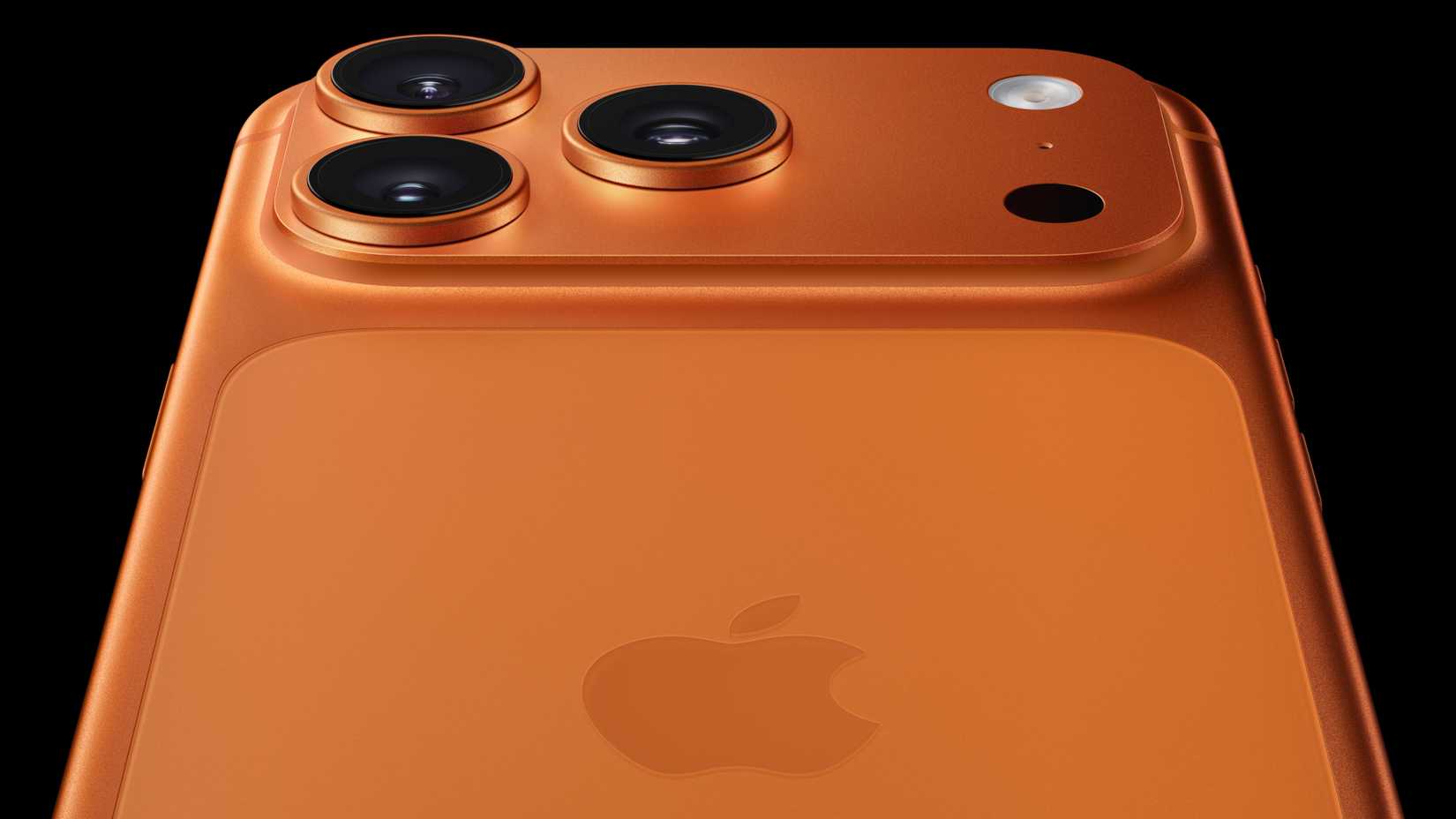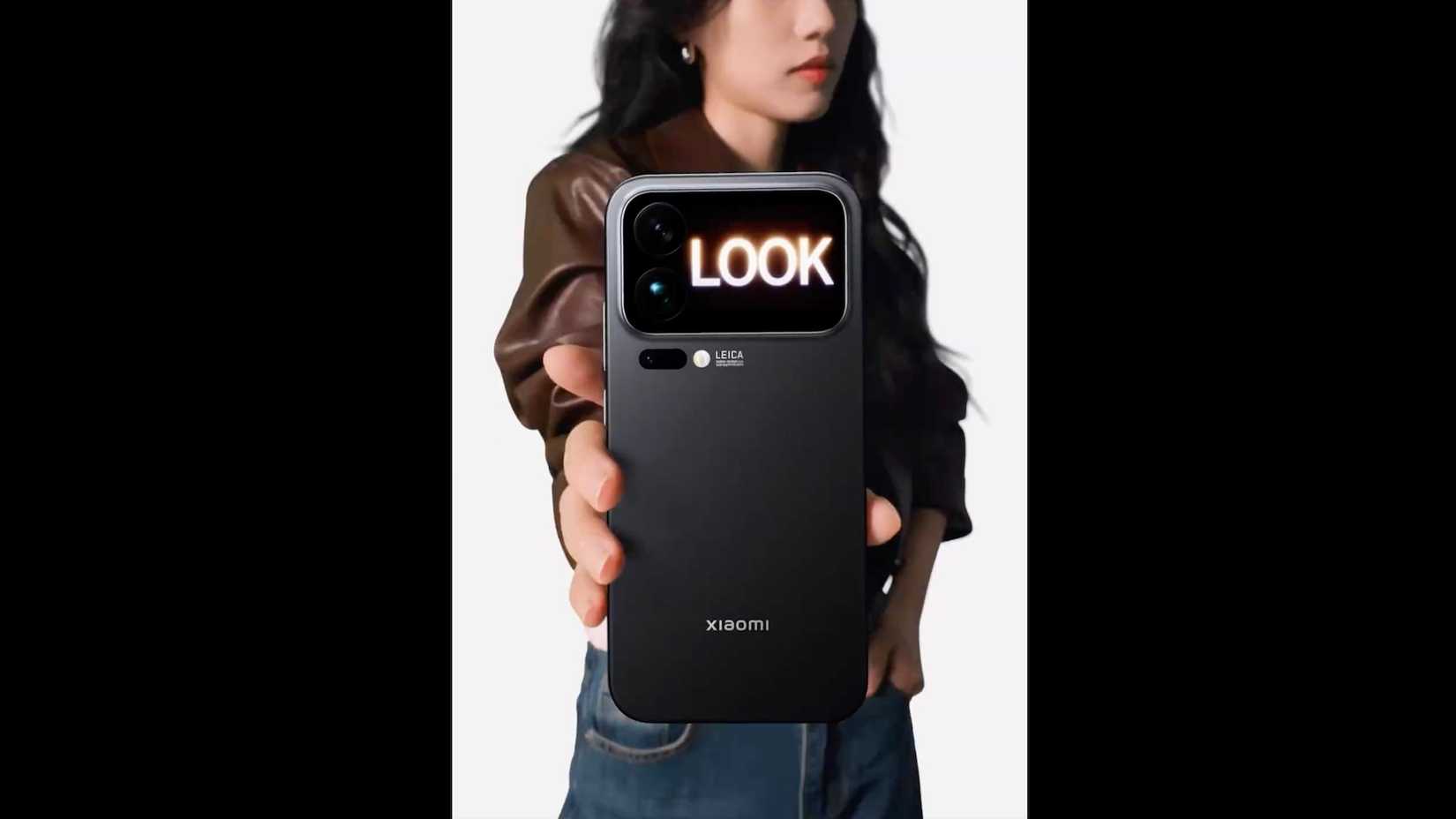Xiaomi will launch the Xiaomi 17 series phones during September, and has now released a teaser to show what’s going to separate its new phones from the Apple iPhone 17, which it sees as its main competitor.
The big new feature? It’s called the Magic Back Screen, and it’s part iPhone 17, part Galaxy Z Flip 7, part smartwatch, and sadly, set up to fail before it’s even on sale.
What is the Magic Back Screen?
A rear-mounted screen
You’ve likely seen the Apple iPhone 17 Pro and Pro Max’s design already, with its so-called Plateau camera module, which sets the cameras off to one side and leaves the other side blank aside from the flash and a sensor. It’s somewhat unfinished, visually, but not unattractive.
Xiaomi has used a very similar design for the Xiaomi 17 Pro and 17 Pro Max, but it has not left the Plateau blank. It has filled the space with a screen. In the teaser video the Magic Back Screen takes up the top third of the phone’s rear panel, and like the cover screen on a compact folding phone, it encapsulates the cameras.
While the video focuses attention on the Magic Back Screen, the eagle-eyed will notice there are only two cameras, and no sign of a flash unit, or smaller camera for depth, macro, or telephoto duties. In a second video, Xiaomi has given us a much clearer look of the Magic Back Screen, and you will see these have been moved below the Plateau-style module, allowing Xiaomi to use as much of the space for its screen as possible.
No need for a smartwatch
Or a compact folding phone
The Magic Back Screen itself is shown with a clock, wallpaper, and possibly a card related to an incoming call displayed. The functionality is likely to be fairly similar to a smartwatch, which shows the time, wallpaper, and incoming calls on your wrist. The Magic Back Screen will probably show notifications and other glanceable information too. Due to the screen and camera’s proximity to each other, the pair will probably work together to take selfies, just like on the Galaxy Z Flip 7.
On paper like this, a rear-facing screen looks like a good idea. It blends functionality from other devices into one phone with a standard, accepted shape. No need for a folding phone or a smartwatch. I’ll bet Xiaomi will sell it on leaving your phone face down but still being able to see crucial information too.
Not the first we’ve seen
None have been a success
These are all solid reasons to make a phone with a screen on the back, but this is not the first time one has come along. Sadly, they’ve all disappeared because unfortunately, it’s a bit too gimmicky.
Xiaomi itself has had a go before with the Xiaomi Mi 11 Ultra. It had a tiny 1.1-inch secondary screen on the back, next to the cameras, which showed the time, notifications, and worked as a camera viewfinder too. It was abandoned for the sequel, and hasn’t made a reappearance on a Xiaomi phone until now.
It’s not the only one. ZTE tried with the Nubia X and Nubia Z20, Vivo gave it a shot with the Nex Dual Screen Edition, and Indian phone brand Lava saw the Xiaomi Mi 11 Ultra and made its own version called the Agni 3. Before all these phones, now defunct brand Yota put an E-Ink screen on the back of the YotaPhone 2, and LG messed around with secondary screens on the front of several V-Series phones.
This is by no means an exhaustive list. Meizu, Asus, and Ulefone among others have all tried variations on the rear screen, while the Nothing Phone 3 is the most recent to incorporate a simple screen on the back of a phone.
It never lasts
Maybe the Xiaomi 17 will be different?
The rear-mounted screen has never caught on enough to become a mainstream feature. It’s a fun tech showcase, cool as a gimmick to amaze your friends, and a handy feature for the selfie-obsessed, but never has it gone beyond this. It’s a surprise to see Xiaomi, a brand which has already experimented with a rear screen, return to the well when it clearly didn’t really work the first time around.
What the rear screen does well is look good in the marketing materials, and it certainly can grab initial attention. I’m writing about it, after all. However, once the initial “oh!” moment has passed, the rear screen is a redundant feature. We all look at the front of our phones most of the time, leaving rear screens to be forgotten.
When compact folding phones like the Galaxy Z Flip 7 exist, along with a hugely varied range of smartwatches, adding a rear screen to a phone in 2025 is an unexpected move, especially given how many have failed in the past. However, perhaps the Xiaomi 17 Pro and Xiaomi 17 Pro Max will do something really different with the feature, and it’ll be the first to be more than a gimmick with niche appeal. Xiaomi will launch the Xiaomi 17 series in September in China, but the exact date has not been confirmed yet.






